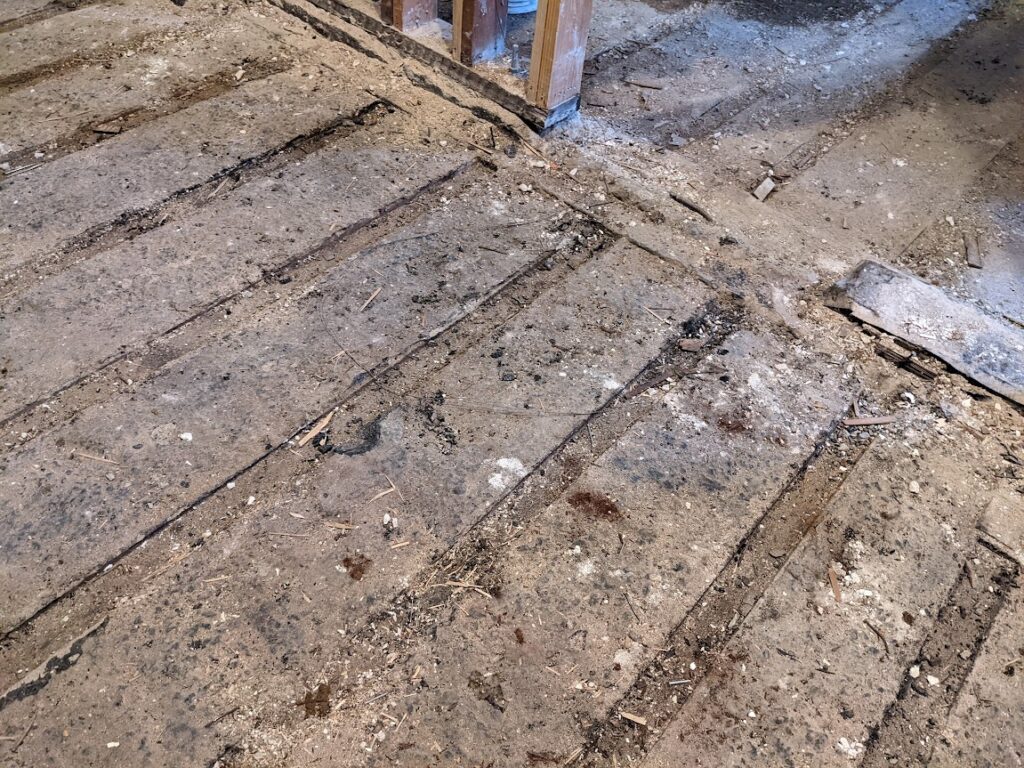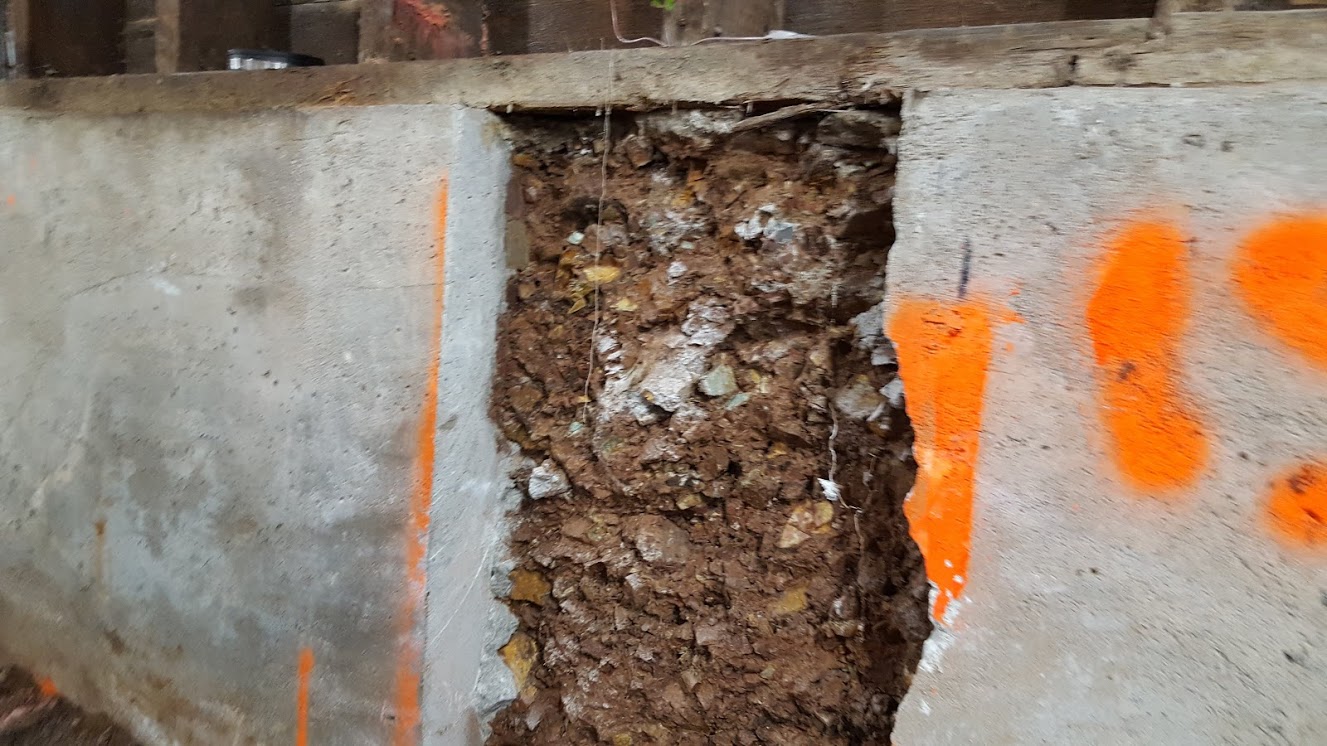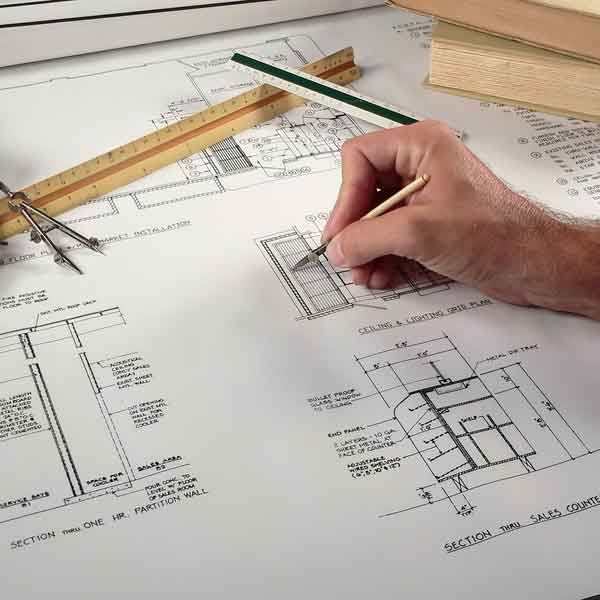
In my years doing remodeling projects in old houses in the San Francisco Bay Area, there is one thing I have learned: You never know what you may find when you start demolition.
The older the house, the more likely you are to find weirdness.
In today’s installment of “oh, my, what were they thinking”, I present to you the photograph above. The photo shows what we found when we pulled up an expensive solid oak wood floor. What you are looking at are 1×4 wood nailers placed at approximately 14-inches on center, imbedded in concrete.
Apparently, what the builder did was this: they poured a layer of concrete on top of an existing basement floor slab. While that was still wet, they pushed the 1x4s into the concrete, then leveled them while the concrete was wet.
That can not have been easy.
After the concrete set, they installed the oak floor using the 1x4s as nailers.
This is SO NOT the way to install a wood floor.
I am guessing that they were trying to accommodate an uneven or sloping basement floor slab.
But because of this highly unorthodox installation method, they caused all manner of problems, not the least of which was that the moisture from the concrete wicked into wood and caused the wood to rot.
This rot was evident not only in the nailers, but in the sill plates for the interior walls, and on the underside of the oak floors (now removed).
All of this will be removed. We will put down a vapor barrier, pour a new, level concrete floor, and once it is cured, put down a floating, engineered wood floor, over paper slip sheets.
This is not the worst thing I’ve seen when we’ve done interior demolition. We have found structural support beams that have been cut away to install mechanical ducts, we have found framing 36-inches apart (code says 16-inches).
But the worst situation we have found is when we were replacing what we thought was a brick foundation, only to discover that the visible brick was only at the door thresholds. The actual foundation was made out of rubble: just rocks and gravel! As seen in the featured image for this post.
This is one of the reasons remodeling can be more expensive than building new: having to remove and replace work that couldn’t be seen until demolition started that was done incorrectly, or has rotted away.
I always recommend the owner hold out at least 10% of the construction cost as a contingency budget to address just these kinds of situations.
Cheers,

David
If you are interested in building a new home, an ADU, or remodeling your current home, get your copy of my Project Planning Cheat Sheet to help you prepare by setting a realistic budget and schedule. Just sign up in the form on the right side of this page.





